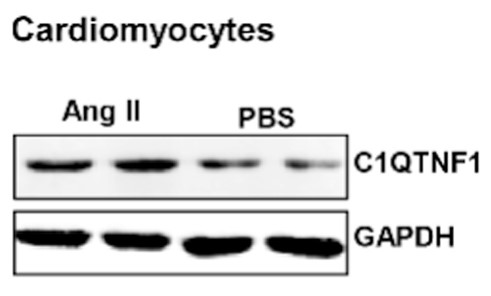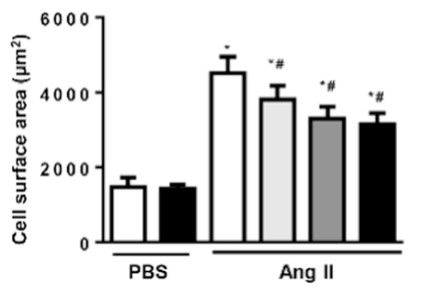C1QTNF1
-
Official Full Name
C1q and tumor necrosis factor related protein 1 -
Overview
C1q associates with the proenzymes C1r and C1s to yield C1, the first component of the serum complement system. The collagen-like regions of C1q interact with the Ca(2+)-dependent C1r(2)C1s(2) proenzyme complex, and efficient activation of C1 takes place on interaction of the globular heads of C1q with the Fc regions of IgG or IgM antibody present in immune complexes. -
Synonyms
C1QTNF1;C1q and tumor necrosis factor related protein 1;GIP;CTRP1;ZSIG37;complement C1q tumor necrosis factor-related protein 1;G protein coupled receptor interacting protein;g protein-coupled receptor-interacting protein
Recombinant Proteins
- Rat
- Human
- Mouse
- Zebrafish
- Rhesus macaque
- Mammalian Cells
- HEK293
- E.coli
- His
- Flag
- Non
- DDK
- Avi
- Fc
- GST
Background

Fig1. CTRP1 is composed of four distinct structural domains, namely a signal peptide at the N terminus, a short variable domain, a collagen-like domain, and a C-terminal C1q-like globular domain. (Yang Wang, 2023)
What is C1QTNF1 protein?
C1QTNF1 (C1q and TNF related 1) gene is a protein coding gene which situated on the long arm of chromosome 17 at locus 17q25. The mechanism of action of C1QTNF1 protein is complex and involves several biological pathways. It has structural similarities to C1q and tumor necrosis factor (TNF), suggesting that it may play a role in immune response and inflammatory processes. By binding to receptors on the cell surface, C1QTNF1 activates downstream signal transduction pathways and affects cell proliferation, differentiation and apoptosis. In addition, C1QTNF1 may also be involved in regulating immune cell activity and inflammatory response by regulating cytokine release. The C1QTNF1 protein is consisted of 281 amino acids and its molecular mass is approximately 31.7 kDa.
What is the function of C1QTNF1 protein?
C1QTNF1 is closely related to the regulation of the immune system. It is involved in the inflammatory response and the activation process of immune cells, and may regulate the function of immune cells by binding to specific receptors, thus affecting the immune response. C1QTNF1 is also involved in metabolic processes, including the metabolism of fatty acids and the regulation of energy balance. C1QTNF1 also plays a role in the repair and regeneration of tissue after injury. For example, it may help repair damaged heart muscle tissue by promoting cell proliferation and differentiation.
C1QTNF1 Related Signaling Pathway
C1QTNF1 can activate the NF-κB signaling pathway and promote the occurrence of inflammation. Specifically, C1QTNF1 binds to and activates the IκB kinase (IKK), which releases the NF-κB p65 subunit and induces the expression of genes associated with inflammation. C1QTNF1 can also activate the JNK/p38 signaling pathway and promote the occurrence of apoptosis and inflammatory response. C1QTNF1 can also activate the TNF-α signaling pathway and promote the occurrence of inflammatory responses.
C1QTNF1 Related Diseases
C1QTNF1 has been implicated in the occurrence of coronary artery disease, possibly by affecting the function of vascular smooth muscle and promoting the development of atherosclerosis. C1QTNF1 is associated with chronic granulomatous disease, which is often characterized by persistent inflammatory responses and tissue damage. C1QTNF1 plays a role in tumor development, possibly by influencing tumor cell growth, apoptosis, and metastasis, as well as regulating immune cell infiltration in the tumor microenvironment. The role of C1QTNF1 in cardiovascular disease includes stimulating aldosterone production, affecting cardiac function and blood pressure regulation. As a member of the adiponectin family, C1QTNF1 (CTRP1) is involved in the regulation of fat metabolism and energy balance, and may be associated with obesity, type 2 diabetes and other related diseases. C1QTNF1 plays a role in the protection of myocardial ischemic injury, possibly by influencing cardiomyocyte metabolism and repair.
Bioapplications of C1QTNF1
As a new drug target, C1QTNF1 has shown wide application prospect in tumor immunotherapy. By targeting C1QTNF1, new treatments can be developed, especially for diseases with abnormal levels of C1QTNF1 expression. The expression level of C1QTNF1 is associated with the progression of certain diseases, so it can be used as a biomarker to aid in the diagnosis and prognosis assessment of diseases. For example, in certain types of tumors, the expression level of C1QTNF1 may be related to tumor development and immune infiltration in patients.
Case Study
Case Study 1: Leiming Wu, 2018
Complement C1q tumor necrosis factor related proteins (C1QTNFs) have been reported to have diverse biological influence on the cardiovascular system. C1QTNF1 is a member of the CTRP superfamily. C1QTNF1 is expressed in the myocardium; however, its function in myocytes has not yet been investigated. This study aimed to systematically investigate the roles of C1QTNF1 in angiotensin II (Ang II)-induced cardiac hypertrophy. C1QTNF1 knock-out mice were used with the aim of determining the role of C1QTNF1 in cardiac hypertrophy in the adult heart. Data from experiments showed that C1QTNF1 was up-regulated during cardiac hypertrophic processes. C1QTNF1 deficiency accelerated cardiac hypertrophy, fibrosis, inflammation responses, and oxidative stress with deteriorating cardiac dysfunction in the Ang II-induced cardiac hypertrophy mouse model. We identified C1QTNF1 as a negative regulator of cardiomyocyte hypertrophy in Ang II-stimulated neonatal rat cardiomyocytes using the recombinant human globular domain of C1QTNF1 and C1QTNF1 siRNA. Injection of the recombinant human globular domain of C1QTNF1 also suppressed the Ang II-induced cardiac hypertrophic response in vivo. The anti-hypertrophic effects of C1QTNF1 rely on AMPKa activation, which inhibits mTOR P70S6K phosphorylation. An AMPKa inhibitor abrogated the anti-hypertrophic effects of the recombinant human globular domain of C1QTNF1 both in vivo and vitro. Moreover, C1QTNF1-mediated AMPKa activation was triggered by the inhibition of PDE1-4, which subsequently activated the cAMP/PKA/LKB1 pathway.

Fig1. The expression of C1QTNF1 in neonatal rat cardiomyocytes (NRCMs).

Fig2. Quantitative results of the cell surface area of cardiomyocytes in the indicated group.
Case Study 2: Liyan Chen, 2019
Glioblastoma (GBM) is the most frequent and malignant type of primary brain tumors in adults. The valuable prognostic biomarkers and therapeutic targets for GBM remain to be elucidated. The association of adipokines with cancer has been well documented. The C1q/TNF-related protein 1 (CTRP1), a novel adipokine, belongs to the CTRP family. In the present study, the expression and potential roles of CTRP1 in GBM were explored based on in silico evaluation, including GEPIA, the Pathology Atlas of the Human Protein Atlas, cBioPortal, TIMER, and SurvExpress. The CCK8, transwell, and wound healing assays were used to detect cell proliferation and migration. CTRP1 was mainly localized in the cytoplasm and cell membrane of GBM cells. CTRP1 knockdown significantly inhibited the proliferation and migration in human GBM cells, suggesting the inhibition of CTRP1 on human GMB progression. Moreover, CTRP1 knockdown inhibited CCL2 expression, and CCL2 overexpression reversed the inhibition of cell proliferation and migration induced by CTRP1 knockdown.

Fig3. The correlation of CTRP1 mRNA with CCL2 mRNA in GBM was explored using the "correlation" module of TIMER.

Fig4. The expressions of CTRP1 in siCTRP1, NC, and CON cells were detected by western blot.
Quality Guarantee
High Purity
.jpg)
Fig1. SDS-PAGE (C1QTNF1-0053H)
.
.jpg)
Fig2. SDS-PAGE (C1QTNF1-0052H)
Involved Pathway
C1QTNF1 involved in several pathways and played different roles in them. We selected most pathways C1QTNF1 participated on our site, such as , which may be useful for your reference. Also, other proteins which involved in the same pathway with C1QTNF1 were listed below. Creative BioMart supplied nearly all the proteins listed, you can search them on our site.
| Pathway Name | Pathway Related Protein |
|---|
Protein Function
C1QTNF1 has several biochemical functions, for example, collagen binding,protein binding. Some of the functions are cooperated with other proteins, some of the functions could acted by C1QTNF1 itself. We selected most functions C1QTNF1 had, and list some proteins which have the same functions with C1QTNF1. You can find most of the proteins on our site.
| Function | Related Protein |
|---|---|
| collagen binding | SPARC,SERPINH1,SMAD7,ITGA1,MMP13,MMP9,CHADL,CTSS,ABI3BP,NID2 |
| protein binding | PPP2R5B,FKBP1B,KLK13,TAL2,TLR4,PSMD2,CALM2,DDX21,BRPF1,RTF1 |
Interacting Protein
C1QTNF1 has direct interactions with proteins and molecules. Those interactions were detected by several methods such as yeast two hybrid, co-IP, pull-down and so on. We selected proteins and molecules interacted with C1QTNF1 here. Most of them are supplied by our site. Hope this information will be useful for your research of C1QTNF1.
SGTA;PRPF31;LNX1;CACNA1A;UBQLN4
Resources
Related Services
Related Products
References


